Are you a Quiet Speculation member?
If not, now is a perfect time to join up! Our powerful tools, breaking-news analysis, and exclusive Discord channel will make sure you stay up to date and ahead of the curve.
While StarCityGames Classic events are normally considered “low-key” when compared to Open Events and Grand Prix, SCG Atlanta proved to be highly valuable for Modern analysis, coming off the heels of the recent Splinter Twin ban. In case you’ve been living under a rock the past week, check out Wizards’ official announcement here and my analysis-based opinion piece here. Today, we’ll be focusing primarily on defining this new landscape we find ourselves in.
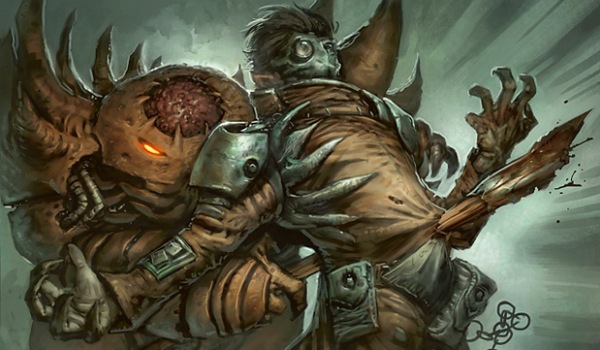
What will the world look like with Splinter Twin gone? Will a new deck rise to take its throne? Will Twin’s absence be the final crack in an old dam that bursts forth, spilling thousands of solitaire combo decks out onto the plains, drowning everything in their path? Let’s find out!
[wp_ad_camp_1]
By The Numbers: SCG Classic Atlanta
The Top 16 of SCG Atlanta Classic featured 10 different archetypes, with six strategies making their way to the Top 8. That’s a slam-dunk in terms of format diversity if we’re counting, but it’s important not to get ahead of ourselves here. This is only “Week 1” of the new format, and it’s at least fair to assume immediate fallout from Twin’s lost market share would be spread among different decks, and not concentrated in one archetype. There very well could be a “best deck” out there that just hasn’t been found yet, or maybe it has been found but Atlanta's conditions weren’t conducive to its success. Still, for those crying “the sky is falling”, SCG Atlanta definitely contains some unavoidable evidence. Let’s dive in a little deeper, first looking at the Top 8, then branching out into the Top 16 and beyond.
Top 8 Statistics
| Deck Name | # in Top 8 |
|---|---|
| Temur Delver | 1 |
| Merfolk | 2 |
| Jund | 1 |
| Affinity | 2 |
| Burn | 1 |
| Zoo | 1 |
Leading up to the event, many players expected Infect and R/G Tron to be big winners as a result of the Splinter Twin banning. But hold on, wasn’t Summer Bloom banned as well? Yes, but there’s a big difference between a deck like Amulet Bloom getting the axe and a ban aimed at a Tier 1 archetype. While Amulet Bloom had been around for a significant amount of time, aside from Justin Cohen’s Pro Tour Fate Reforged performance it has never approached Twin status. At the time of its banning, Amulet Bloom, although top-tier, had yet to affect the format in the kind of significant fashion that could change format composition with its absence. In fairness, this was likely the result of everyone assuming Bloom would be banned at some point and preemptively adjusting. If Bloom had survived another year then we might have seen it start to alter Modern as players became more confidant in its place, but that didn't happen. This leaves Twin to take all the attention.
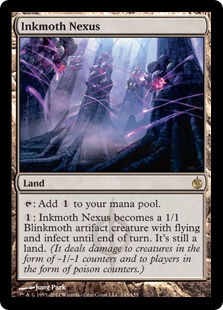 With this in mind, competitors focused exclusively on Splinter Twin (or the lack thereof) and what that could mean for the format. Inkmoth Nexus and Grove of the Burnwillows spiked on MTGO, as did Through the Breach. The talk of the town had Infect, Tron, and Grishoalbrand as top players with Twin out of the picture.
With this in mind, competitors focused exclusively on Splinter Twin (or the lack thereof) and what that could mean for the format. Inkmoth Nexus and Grove of the Burnwillows spiked on MTGO, as did Through the Breach. The talk of the town had Infect, Tron, and Grishoalbrand as top players with Twin out of the picture.
The result? No Infect, Tron, or Goryo’s Vengeance decks in the Top 8 of SCG Atlanta. In fact, only one Infect list and one Grishoalbrand list even managed to crack the Top 16, coming in at 16th and 15th respectively. Obviously, the Top 16 numbers for Atlanta suggest either the field was prepared for these decks, or they don’t have what it takes to compete for some other reason. Looking to Sheridan's results from yesterday suggests the former is the most likely explanation. To determine the answer to this question, let’s take a look at some lists and see what they can tell us.
The Decks
First up, the champ:
Temur Delver, Todd Anderson (1st, SCG Classic Atlanta 1/24/2016)
Taking down the field with a “new” archetype, Todd Anderson’s performance definitely provides some validation on the “format diversity” front. It’s definitely interesting to see Todd’s finish after reading this from the January 18th update:
"Similarly, Temur Tempo used to see play at high-level events but has been supplanted by Temur Twin. We considered what one would do with the cards from a Splinter Twin deck with Splinter Twin banned. In the case of some Jeskai or Temur, there are very similar decks to build. In other cases, there is Kiki-Jiki as a replacement. In the interest of competitive diversity, Splinter Twin is banned from Modern"
Again, the naysayers will say “this is Week 1, this is an SCG Classic event, etc…” but I’m starting to become a believer. I love this list, and under the hood it’s apparent Todd was clearly focused on accomplishing some particular objectives.
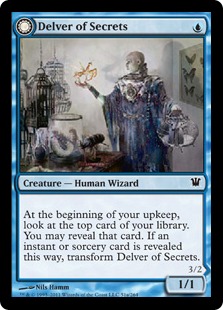 First, this is a Delver deck. We’ve seen all 75 of these cards before in other lists (no surprises there) but their unique combination and numbers work together to create something unique. Delver of Secrets is almost always accompanied by Remand, and we see the full four here. Pushing the tempo route, Todd is playing three Spell Pierce and an Izzet Charm, alongside three Vapor Snag. But none of this is necessarily new. So why did Todd take down Atlanta? Because Twin is gone.
First, this is a Delver deck. We’ve seen all 75 of these cards before in other lists (no surprises there) but their unique combination and numbers work together to create something unique. Delver of Secrets is almost always accompanied by Remand, and we see the full four here. Pushing the tempo route, Todd is playing three Spell Pierce and an Izzet Charm, alongside three Vapor Snag. But none of this is necessarily new. So why did Todd take down Atlanta? Because Twin is gone.
Normally, these Delver tempo decks have difficulty competing when opponents can find a way to kill Delver himself. When it’s ahead, this archetype is eerily efficient in terms of putting the opponent on the back foot and 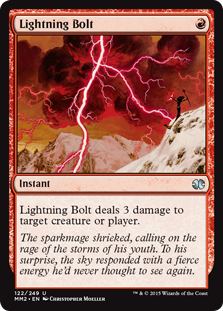 keeping them there. It’s always had trouble playing from behind, however, and one of the best ways to fight Delver decks has always been Lightning Bolt. But wait a minute! Twin got banned, not Lightning Bolt! True, third person literary device, but take a look at the frontrunning archetypes. Affinity doesn’t play Bolt. Tron doesn’t play Bolt. Infect doesn’t play Bolt. Abzan (which has been on the rise recently) doesn’t play Bolt. Sidestepping Infect hate with diverse threats like Hooting Mandrills and Tarmogoyf, Todd Anderson capitalized on a lack of Lightning Bolt in the format and punished an apparent field full of greedy players looking to execute their solitaire combos with impunity. Four Remands and four Spell Pierce effects, with four Snapcaster Mage’s in reserve, makes casting Through the Breach or resolving a Living End near impossible. This left Todd free to beat up on the rest of top decks, aiming primarily at Affinity and Tron.
keeping them there. It’s always had trouble playing from behind, however, and one of the best ways to fight Delver decks has always been Lightning Bolt. But wait a minute! Twin got banned, not Lightning Bolt! True, third person literary device, but take a look at the frontrunning archetypes. Affinity doesn’t play Bolt. Tron doesn’t play Bolt. Infect doesn’t play Bolt. Abzan (which has been on the rise recently) doesn’t play Bolt. Sidestepping Infect hate with diverse threats like Hooting Mandrills and Tarmogoyf, Todd Anderson capitalized on a lack of Lightning Bolt in the format and punished an apparent field full of greedy players looking to execute their solitaire combos with impunity. Four Remands and four Spell Pierce effects, with four Snapcaster Mage’s in reserve, makes casting Through the Breach or resolving a Living End near impossible. This left Todd free to beat up on the rest of top decks, aiming primarily at Affinity and Tron.
When you’re beating down quickly, Spreading Seas is more than enough to get the job done against Tron, leaving Todd to fill his sideboard with Ancient Grudges and, heck yes, Gut Shot! Take that Affinity! Infect has no chance of fighting through Todd’s bevy of one-mana interaction. Whether this archetype has staying power once the rest of the format starts gunning for it remains to be seen, but for now Todd’s list makes for an explosive start to the new Modern.
Jund, Dustin Green (4th, SCG Atlanta 1/24/2016)
If we’re expecting a lot of R/G Tron, then Jund is definitely an interesting choice, which makes Dustin’s strong performance an excellent example for analysis. As we saw from the Top 16 statistics, Tron seems to have underperformed, which means it was either hated out of the top tables or doesn’t have what it takes to compete in the new metagame. I think, and Sheridan's stats agree, it’s safe to go with the former, as we’ve seen the power of RG Tron enough that it seems a stretch it would get worse, not better, with Twin gone. Here, the four Crumble to Dusts in Jund’s sideboard shows Dustin is at least planning to face Tron (and some players have gone on record stating the matchup is so bad it’s almost an auto-lose). I know from experience: in my first Modern Nexus Video Series I luckily dodged Tron, but got crushed multiple times in practice games after the series with the deck.
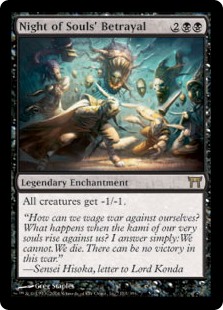 We also see a Night of Souls' Betrayal in the board to fight Infect, providing further evidence it was probably hated out of the event. Night of Souls' Betrayal has always been an awesome card if you can take the relatively narrow applications, as it only does worthwhile work against Lingering Souls, Infect, and Affinity. In Affinity matchup, it’s pretty much an ongoing Shatterstorm, as Steel Overseer’s aren’t sticking around enough to build up a board presence. Obviously, some things stick around (Ornithopter can still pick up Cranial Plating, and Etched Champion is still a problem) but Night of Souls' Betrayal is still lights out for Affinity in my book.
We also see a Night of Souls' Betrayal in the board to fight Infect, providing further evidence it was probably hated out of the event. Night of Souls' Betrayal has always been an awesome card if you can take the relatively narrow applications, as it only does worthwhile work against Lingering Souls, Infect, and Affinity. In Affinity matchup, it’s pretty much an ongoing Shatterstorm, as Steel Overseer’s aren’t sticking around enough to build up a board presence. Obviously, some things stick around (Ornithopter can still pick up Cranial Plating, and Etched Champion is still a problem) but Night of Souls' Betrayal is still lights out for Affinity in my book.
Dustin’s deck is free to focus on Affinity and Burn with Twin out of the picture, suggesting unless Twin’s metagame share is absorbed by another archetype, we could see the beginnings of a “rock-paper-scissors” metagame developing. I still think it’s too early to call, but I for one prefer that type of format to the previous “Big Three, and try and prepare for as much as possible after that” environment we’ve always had with Modern.
Merfolk, Kevin Rogers (3rd, SCG Atlanta 1/24/2016)
To be honest, I’m a little surprised to see Merfolk do so well. Two copies in the Top 4 is no joke, and on top of that Merfolk had the highest representation of all archetypes in the Top 16. I’ve worked hard to overcome my bias against this deck. I always fared poorly against Merfolk while I was playing Twin, yet I would also lose when I was on the other side, playing Merfolk against Twin opponents. I would think Twin was an unfavorable matchup, as Merfolk can’t afford much interaction and Twin seems like it could hold off the pressure with Lightning Bolts long enough to combo out. I’ll be honest, I’m not familiar enough with the deck to know. Regardless, less Lightning Bolts is definitely a plus for this deck, though my experience with Grixis Control has taught me Lightning Bolt is nowhere near enough to keep this deck down.
4 Tectonic Edge in the board on top of 4 Spreading Seas in the main is a LOT of Tron hate. I’m also surprised to see Tectonic Edge at all: isn’t Ghost Quarter a better option? It seems like if they have four lands, the damage has been done, but again, maybe I’m missing something here (Editor's Note: Unless you've played Spreading Seas then yes, it is too slow).
The Top 16
| Deck | # in Top 16 |
|---|---|
| Burn | 1 |
| Temur Delver | 1 |
| Zoo | 1 |
| Merfolk | 1 |
| BW Eldrazi | 1 |
| Abzan Company | 1 |
| Grishoalbrand | 1 |
| Infect | 1 |
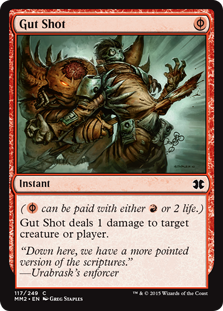 The rest of the Top 16 is very interesting as well. Eight different decks with no Tron and only one Infect. Taking a look around it's not hard to see why: there's hate aplenty for both decks present. In addition to what I said above, Tye Copeland followed Todd Anderson's lead and played Gut Shot backing it up with Pyroclasm against Infect. Both Affinity lists had Whipflares in addition to Galvanic Blast. The Burn and Zoo decks all had Lightning Bolt and Grim Lavamancer. Infect can deal with a removal spell or two, but not the quantity many of these decks were boarding into. Hats off to Travis Anderson for weathering the removal storm to make Top 16.
The rest of the Top 16 is very interesting as well. Eight different decks with no Tron and only one Infect. Taking a look around it's not hard to see why: there's hate aplenty for both decks present. In addition to what I said above, Tye Copeland followed Todd Anderson's lead and played Gut Shot backing it up with Pyroclasm against Infect. Both Affinity lists had Whipflares in addition to Galvanic Blast. The Burn and Zoo decks all had Lightning Bolt and Grim Lavamancer. Infect can deal with a removal spell or two, but not the quantity many of these decks were boarding into. Hats off to Travis Anderson for weathering the removal storm to make Top 16.
Tron had it much worse. Chris Crescenti's Abzan Company list had Fulminator Mage with a full set of Eternal Witness to kill the Urzatron and make sure it stayed dead. Zan Syed and Brian Eason had Molten Rain in their Zoo boards. There were three Merfolk decks with full sets of Spreading Seas, and Jacob Betts also had Sea's Claim. The Eldrazi deck had Ghost Quarter maindecked. In a field this hostile it's no wonder Tron didn't place. Everyone expected it and was ready, a clear case of being hated out.
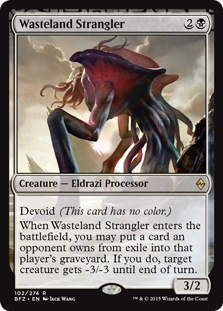 The only big mana deck was a single copy of BW Eldrazi, which went with the traditional (can something be traditional when it's only a few months old?) processors instead of Heartless Summoning. Tron hate is not always very effective against Eldrazi so I'm not surprised it survived the splash damage. What I am surprised about is, in a very aggressive field, Mahindra Bheodari got that far. Eldrazi is very weak to aggressive decks. What I'm curious about is singleton Celestial Colonnade in the board. I suppose it's possible Oblivion Sower can provide the mana to activate it, but when do you bring it in at all? It's interesting enough that I hope it isn't just a mis-entered Celestial Purge, and that someone can explain its presence and purpose.
The only big mana deck was a single copy of BW Eldrazi, which went with the traditional (can something be traditional when it's only a few months old?) processors instead of Heartless Summoning. Tron hate is not always very effective against Eldrazi so I'm not surprised it survived the splash damage. What I am surprised about is, in a very aggressive field, Mahindra Bheodari got that far. Eldrazi is very weak to aggressive decks. What I'm curious about is singleton Celestial Colonnade in the board. I suppose it's possible Oblivion Sower can provide the mana to activate it, but when do you bring it in at all? It's interesting enough that I hope it isn't just a mis-entered Celestial Purge, and that someone can explain its presence and purpose.
The other interesting inclusion is Copeland's Grishoalbrand deck, though maybe that shouldn't be surprising. Goryo's Vengeance does not like Spell Snare or Dispel and with Twin gone those cards are not seeing enough play anymore. The Delver lists had the counters to stop the combo but the rest of the Top 16, not so much. If this continues, I'd expect Grishoalbrand to make more regular appearances in Top 8s and more graveyard hate and counters as a result.
Conclusion
As far as Week 1’s go, SCG Atlanta was particularly exciting. It’s awesome to see a “new” archetype take the trophy, and I’m glad we didn’t just see Infect or Tron slide in to replace Twin. That might still end up being the case, but for now the evidence suggests the tools exist to keep the format diverse and competitive without things becoming unbalanced in Twin’s absence. This is the most excited I’ve EVER been going into a Pro Tour, and I can’t wait to see what happens! See you next week!
Trevor Holmes
Twitch.tv/Architect_Gaming
Twitter.com/7he4rchitect
The_Architect on MTGO





I guess that “Celestial Colonnade” in his sideboard was a typo, and in fact he was running Celestial Purge.
Thanks for the tournament spotlight article, Trevor. I think it’s very informative. I think Tron will bounce back, but it’s pretty telling that big-mana decks were considered Public Enemy No. 1 coming in, and people adjusted accordingly (4 Crumble to Dust in a Jund sideboard tells you all you need to know).
Regarding the Merfolk matters, let me speak from my own experience: Twin was a favorable matchup for Merfolk, but not overwhelmingly so. While Twin would force Merfolk to look for and keep hands with interaction (or risk dying on Turn 4), Merfolk decks packed plenty of bounce and removal (especially post-Harbinger of the Tides), and could easily out-tempo Twin to secure a win. Twin also generally ran 4 Bolt, 1-2 Electrolyze, and 1-2 Roast, which is not nearly enough removal to keep Merfolk down (their counterspells were mostly useless thanks to Æther Vial and Cavern of Souls). However, if the Twin player kept drawing into combo threats or landed something like a Teferi or a Keranos, Merfolk would be in trouble. The post-board matchup was virtually the same as pre-board in terms of percentages, since Merfolk players would bring in more counterspells to account for any sweepers Twin could bring in, and Tidebinder Mage blanks Grim Lavamancer while providing you with a body.
Tectonic Edge is popular among a lot of Merfolk players for 2 reasons: 1) a lot of the seasoned Merfolk players who stream their content run it, and there’s a bit of a herd mentality effect going on (especially among the less experienced ones); and 2) Spreading Seas is already a way to buy time. I prefer Ghost Quarter (because I can sneak it into my mainboard much more easily), but you can expect to see either, depending on the Merfolk player’s experience level and preferences.
It’s not heard mentality that drives merfolk players to run tectonic edge. Tectonic edge is good in the tron match up, but it’s also great against bgx/grixis strategies out there. Aether vials become dead cards against iok/thought seize and tec edge helps smooth out your curve in to master of waves as well as combine with spreading seas to cut them off colors.
Ah yeah, I forgot to discuss the manland angle. Tectonic Edge is generally considered to better against UWx Control and BGx Midrange, because those decks generally have things that they want to do that cost 4+ mana (plus manlands that take 4+ mana to activate), but Ghost Quarter is considered to be better against Affinity, Eldrazi, Infect, and Tron (because their manlands take 1 mana to activate or they only need 3 lands to drop huge threats on you). Given that you can tune your sideboard in other ways to combat BGx effectively (Relic of Progenitus and Tidebinder Mage spring to mind) and that UWx is a rarity unless explicitly shown otherwise, I stick with Ghost Quarter and use the additional sideboard room on something else.
Its not heard mentality at all Tec Edge is overall a better card in Merfolk for a number of reasons. Ghost quarter is heard mentality..
I don’t agree. Ghost Quarter is safer to include in the maindeck manabase (because it can fetch you U in case of emergency and save you from color-screw), and it is more potent against the decks that are actually ascendant (or at least predicted to be) in this post-Twin world. Tectonic Edge has its perks, and if we find ourselves overrun with BGx and UWx Control, maybe I’ll reconsider my stance.
P.S.: I’ve been singing Ghost Quarter’s praises for months now (go to the Merfolk primer on MTGSalvation and look up rothgar13 if you don’t believe me). ModernNexus confirmed what I was already saying, which is just further evidence that I was on to something.
I read Andersons article in his Temur Delve list. He kind of agrees that it’s a bad deck he just pilots it well because he loves it. He also stated that he didn’t like Delver at all. He is possibly looking at replacements but it will need lots of testing. He didn’t like playing with Remand and feels like mana leak might be better. Either way for the deck to be competitive it definitely needs more tuning since it looks like it will struggle vs mid range.
I can tell you right now that RUG Delver had a hugely favorable Twin matchup (especially if you’re a psycho like Todd playing 3 Spell Pierce!), so while the deck may be better now than it was before, it’s not because it was terrified of facing Splinter Twin. If you could strike a deal where you played RUG Delver against 15 rounds of Twin at a GP, you’d be close to a lock for top 8.
Twin almost certainly did make RUG Delver less playable in terms of opportunity cost, though, because Twin was playable and RUG Delver was (and still is, I think) a sketchy deck that is neither as powerful nor as consistent as you would like. Fun to play, though.
Grishoalbrand was also a deck that could fight through Twin- in my experience the matchup could plausibly go either way. The big advantage the deck has right now is that it completely demolishes Tron, so if there are a bunch of Karns and Wurmcoils in people’s decks then Daddy Grizz is a good place to be.
Thanks for the article, Trevor!
There is a huge issue with this article. Jund came in 4th not second. The second place was the other merfolk player other than me. Tectonic edge is more for midrange, control and certain combo match-ups. Against jund i cut vial and bring in 2-4 tectonic edges to curve and kill manlands. The important thing to note is that tectonic edge against tron isnt to keep them off tron, its to keep them off 5 lands after i have spreading seas them out of tron. Their out at that point is a hard-costed oblivion stone activation. The reason i dont play ghost quarter is because the purpose isnt to stop tron or stop Manlands specifically its to prevent them from curving 2 spells in one turn against more big mana decks such as control and junk. This isnt herd mentality Mr. Roland, i have been using tectonic edge for 3 years and i understand its purpose well.
Thanks for catching that, it’s fixed. And your comment is why I added the note in about Spreading Seas.
I made a caveat in my previous post to account for experienced players who just prefer to use TecEdge because they assume that they’ll land one Spreading Seas or are more concerned with their opponents hitting a certain land count. I will say that the reasoning is theoretically sound, and I apologize if I implied otherwise.
However, I don’t necessarily agree with the reasoning – I think that assuming you’ll hit a Spreading Seas during the course of the game is dangerous (since the hypergeometric distribution says it’s a roughly 50/50 proposition by Turn 3, which is the absolute latest you’d be safe hitting one), so I prefer standalone land hate that doesn’t require other cards to function. Furthermore, in my experience it doesn’t matter if they slow-roll their way to 5 lands without full Tron and have enough to activate O-Stone – by then, they tend to be dead to pressure.
You are wrong dude – Tec Edge is better – although Ghost Quarter is the new cool land due to the heard mentaility on MTG salvation
I actually think Quarter is better right now than Edge. There are matchups where Edge gets the, well, edge: killing enemy manlands is a big one. But if your fears are Tron and Eldrazi, Edge is not the solution. Also, Edge is not what I want to be doing against Inkmoth Nexus. Those three situations point me much more to Quarter than Edge in the current format.
I don’t disagree that it has its place but I prefer to outright kill the lands against the decks that go long. It’s personal preference depending on how people feel about their match-ups. I’m pretty comfortable against infect (big fan of keeping spreading seas in for inkmoth instead of quarter) but If you aren’t comfortable with the plans I’ve chosen with tectonic edge then ghost quarter is the better of the two. I might adopt a 1 of mainboard and a 3/1 split in the sb for tectonic edge/quarter.
Our fears should never be Eldrazi – Quarter is a win more card against those guys. Ghost quarter is only really useful against Tron, and Tec Edge is good against a range of decks such as Jund and Gifts (which is a deck I think is seriously under-valued – it’s the new twin).
I don’t see where he ever said Dustin Green placed second. But maybe he saw this and corrected his mistake, who knows.
Jund had been up on the SCG site at 2nd in the standings for a while, and then again at 2nd on the deck page for a while longer. I think Trevor and I checked it on the deck link, which has since been updated. We fixed the link here to reflect that though.
For a few hours after the event finished it showed him as second so I can understand how it might have happened.
Good luck flipping delver in a format where your best cantrip is Serum Visions.
My eternal dissatisfaction with Delver decks in Modern, summarized succinctly in one sentence. Hopefully we get Preordain back, or those Prowess decks people are messing around with pan out.
Thanks for yet another great article Modern Nexus, this was encouraging news as it sometimes seems as if it is only a matter of time until we must accept this new colorless world of magic. I’m glad to see new decks take shape, but I fear that between Affinity, Tron, and Eldrazi midrange decks like mine (abzan) are on their heels. I suppose pendulums swing both ways, but until we see the momentum shift, I think I’ll be borrowing my buddy’s fish deck. Which is fun, but I do like to interact at least a little.
Is there a light of at the end of the tunnel for interactive decks? What can wizards give us that will help us engage with other players rather than ignore them?
(Eldrazi terrify me more than any other deck, what is a midrange mage to do against that mence?)
Thanks for all you do, Modern Nexus you’re the first site I visit after work each day.
Uh do you think Fish is not interactive..? 21 out of 41 spells in Rogers’ list can target the opponent’s spells, and the creatures often do blocking duty. Fish is tempo, not aggro, and very interactive as far as I can see.
It has spells to interact but it’s not strictly an Interactive deck, such as midrange or control, it’s light interactions are mainly to push your game plan against opposing disruption rather than to disrupt your opponent’s game plan.
For example spreading seas can interact with your opponent’s lands but it’s main purpouse is to make your dudes unblockable so that your opponent cannot interact with them throught the Combat phase, and the same can be said about aether vial, cavern of souls and kira.
I just came back from FNM and playing T1 vial, T2 chalice, T3 Harbinger and Tidebinder Mage, T4 Negate felt pretty interactive against my Burn opponent who expected a race. That felt pretty disruptive to me.
‘Analysis’ based opinion piece on Twin banning? Dude it was banned for marketing reasons – if you cannot see that then you clearly are ignoring all the evidence and even clear statements made by WOTC’s Aaron Forscythe
Wow – your lack of understanding of the format continues to come to the forefront – Todd’s delver list is plain bad – but you jump in and say what you want about how amazing it is and how it won due to the absence of Twin. Todd himself said the deck was poor – perhaps you should do even a small amount of research before you shot off your random and poorly conceived thoughts.